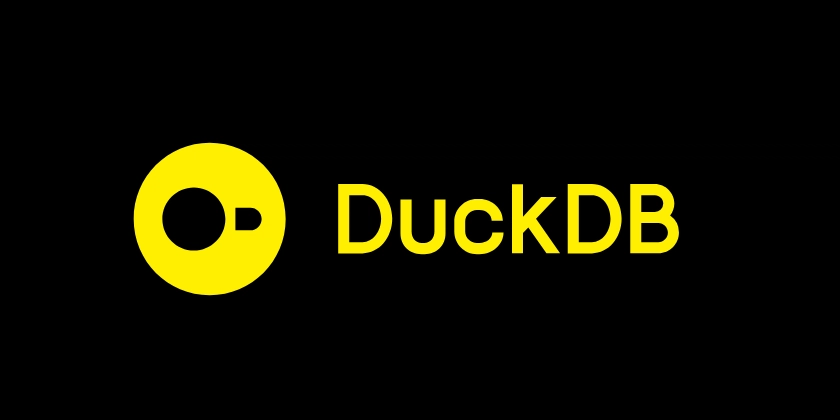DuckDB: When You Don’t Need Spark (But Still Need SQL)
The Problem Too often, data engineering tasks that should be simple end up requiring heavyweight tools. Something breaks, or I need to explore a new dataset, and suddenly I’m firing up Spark or connecting to a cloud warehouse - even though the data easily fits on my laptop. That adds extra steps, slows things down, and costs more than it should. I wanted something simpler for local analytics that could still handle serious queries. What Is DuckDB? DuckDB is an open-source, in-process SQL OLAP database designed for analytics. It runs embedded inside applications, similar to SQLite, but optimized for analytical queries like joins, aggregations, and large scans. In short, it goes fast without adding the complexity of distributed systems. How DuckDB Achieves High Performance Columnar Storage: Data is stored by columns, not rows. This lets queries scan only the data they need, cutting down IO. Vectorized Execution: Processes data in batches (about 1000 rows at a time) to leverage CPU caching and SIMD instructions, reducing processing overhead. These two design choices allow DuckDB to handle complex analytical queries efficiently on a single machine. Handling Large Datasets DuckDB dynamically manages memory and disk usage based on workload size: In-Memory Mode: Keeps everything in RAM if possible. Out-of-Core Mode: Spills to disk if data exceeds memory. Hybrid Execution: Switches between modes automatically based on workload. Persistent Storage: Can save results in .duckdb files for reuse. No manual configuration. No crashing on out-of-memory errors (Hi Pandas!). Extensibility & Concurrency Single-writer, multiple-reader concurrency (MVCC). Growing ecosystem of extensions: Parquet, CSV, S3, HTTP endpoints, geospatial analytics. Trade-Offs: DuckDB vs Specialized Engines DuckDB is flexible and fast, but: SQL Parsing Overhead: Engines like Polars can be faster for simple dataframe operations. General Purpose Design: Flexibility trades off some raw speed. That said, for most data engineering tasks, the trade-off is worth it. Where DuckDB Shines Local dataset exploration (when Pandas hits limits). CI and pipeline testing without Spark. Batch transformations on Parquet, CSV, and other formats. Lightweight production workflows. Limits to Keep in Mind Single-machine only - limited by your hardware. Not built for transactional workloads. SQL pipelines can get messy if not managed well. Reflection: Why This Matters DuckDB helps bridge the gap between dataset size and engineering overhead.It’s not about replacing big tools, but avoiding them when you don’t need them. For tasks that outgrow Pandas or require complex queries, it’s a practical alternative to heavier tools. Thanks for reading.

The Problem
Too often, data engineering tasks that should be simple end up requiring heavyweight tools. Something breaks, or I need to explore a new dataset, and suddenly I’m firing up Spark or connecting to a cloud warehouse - even though the data easily fits on my laptop. That adds extra steps, slows things down, and costs more than it should. I wanted something simpler for local analytics that could still handle serious queries.
What Is DuckDB?
DuckDB is an open-source, in-process SQL OLAP database designed for analytics.
It runs embedded inside applications, similar to SQLite, but optimized for analytical queries like joins, aggregations, and large scans.
In short, it goes fast without adding the complexity of distributed systems.
How DuckDB Achieves High Performance
Columnar Storage:
Data is stored by columns, not rows. This lets queries scan only the data they need, cutting down IO.
Vectorized Execution:
Processes data in batches (about 1000 rows at a time) to leverage CPU caching and SIMD instructions, reducing processing overhead.
These two design choices allow DuckDB to handle complex analytical queries efficiently on a single machine.
Handling Large Datasets
DuckDB dynamically manages memory and disk usage based on workload size:
- In-Memory Mode: Keeps everything in RAM if possible.
- Out-of-Core Mode: Spills to disk if data exceeds memory.
- Hybrid Execution: Switches between modes automatically based on workload.
-
Persistent Storage: Can save results in
.duckdbfiles for reuse.
No manual configuration. No crashing on out-of-memory errors (Hi Pandas!).
Extensibility & Concurrency
- Single-writer, multiple-reader concurrency (MVCC).
- Growing ecosystem of extensions: Parquet, CSV, S3, HTTP endpoints, geospatial analytics.
Trade-Offs: DuckDB vs Specialized Engines
DuckDB is flexible and fast, but:
- SQL Parsing Overhead: Engines like Polars can be faster for simple dataframe operations.
- General Purpose Design: Flexibility trades off some raw speed.
That said, for most data engineering tasks, the trade-off is worth it.
Where DuckDB Shines
- Local dataset exploration (when Pandas hits limits).
- CI and pipeline testing without Spark.
- Batch transformations on Parquet, CSV, and other formats.
- Lightweight production workflows.
Limits to Keep in Mind
- Single-machine only - limited by your hardware.
- Not built for transactional workloads.
- SQL pipelines can get messy if not managed well.
Reflection: Why This Matters
DuckDB helps bridge the gap between dataset size and engineering overhead.It’s not about replacing big tools, but avoiding them when you don’t need them.
For tasks that outgrow Pandas or require complex queries, it’s a practical alternative to heavier tools.
Thanks for reading.








































































